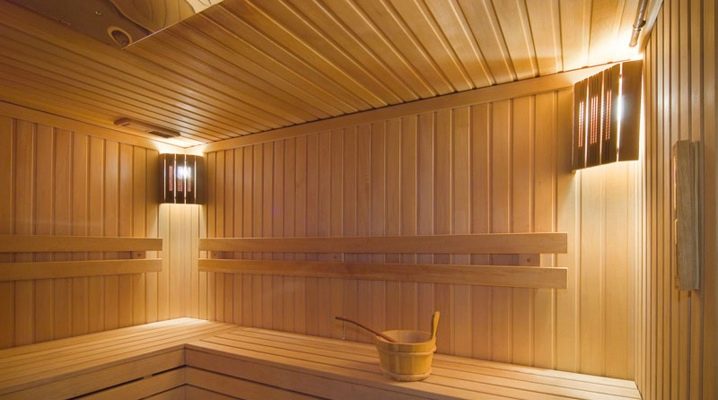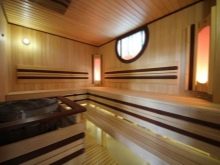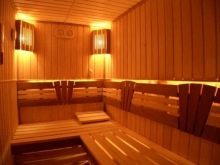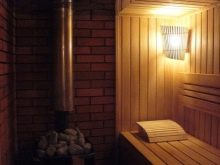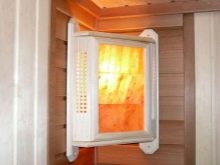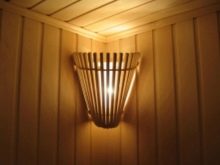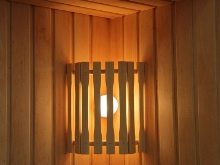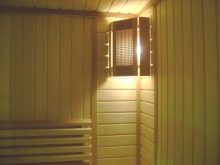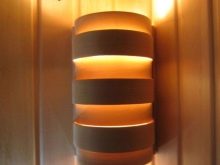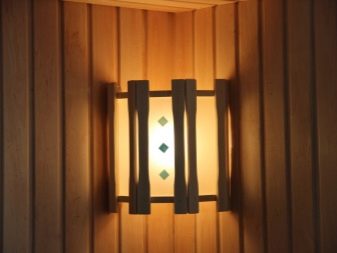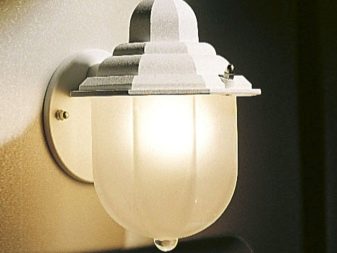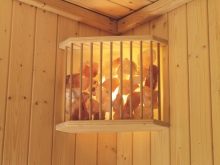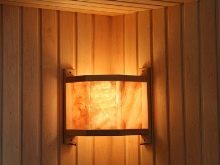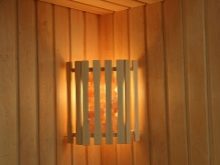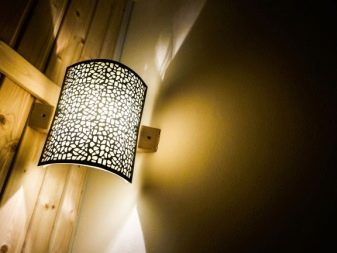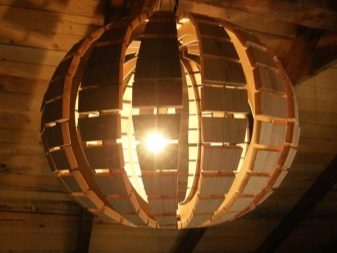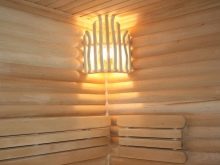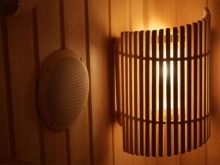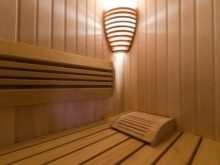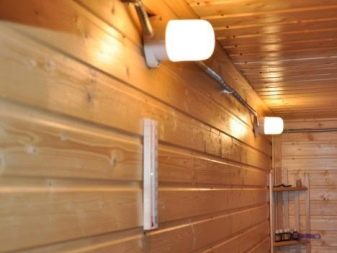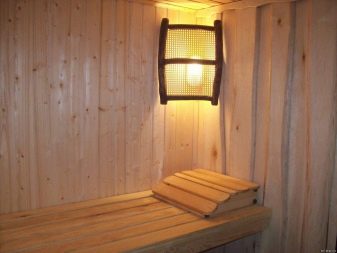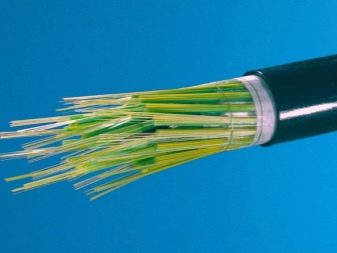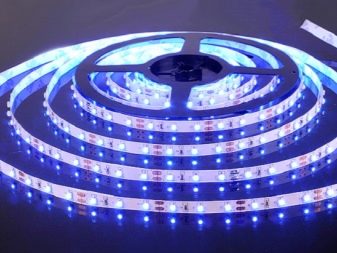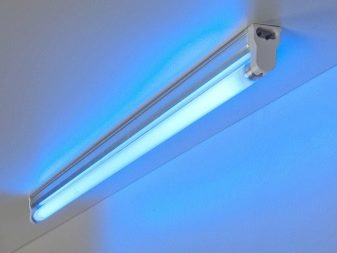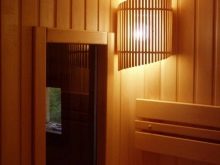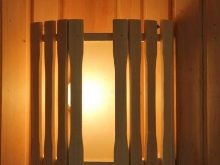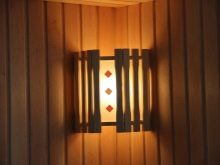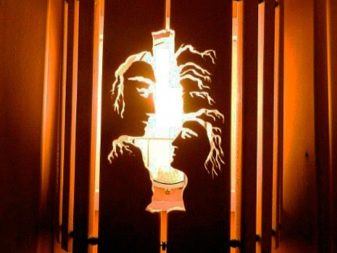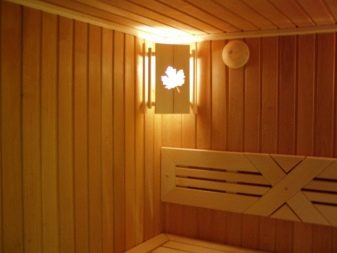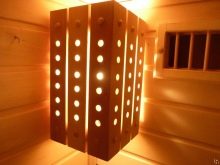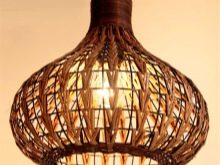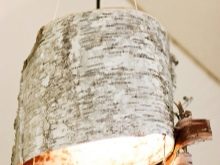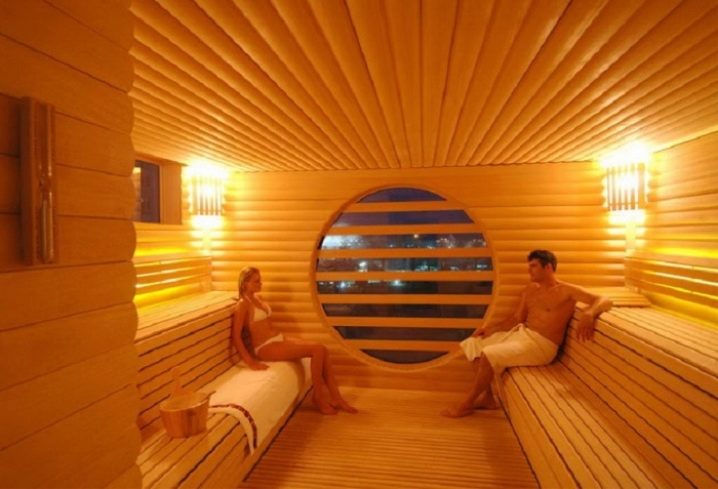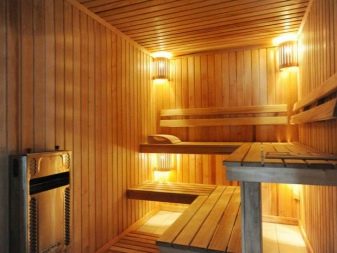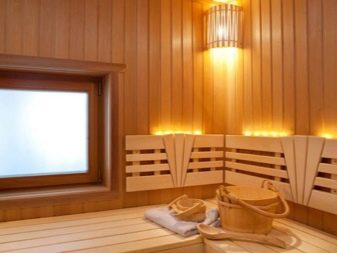Lamp shades and ceiling for a bath
A modern bath is not just a place to wash. Many come here to relax, relieve fatigue or cope with stress. This is achieved not only by the contrast of temperatures, but also by soft, muffled lighting, which does not irritate the eyes and does not act on the nerves. Special lampshades and ceiling lamps made according to certain technologies will help in this.
How to choose?
The bath incorporates several rooms. If the rest room does not put forward special requirements for lighting devices, then the steam room (by virtue of its functions) must be equipped with special lamps.
Ceiling in the steam room must meet the following requirements:
- Moisture resistance. This is achieved due to the tightness of the product: there is a special gasket between the case and the glass.The international security indicator should be IP54 and more.
- Heat resistance. It is important that the bath light source can withstand temperatures in excess of 100 ° C.
- Light should be muffled, diffused, soft.
- Safety: the product should not burst.
- Fire resistance.
It is very important to choose the right material for protection, because it is he who provides all of the above functions:
- Tree: natural material, environmentally friendly. Good for bath rooms.
- Plastic: must be heat resistant, withstand temperatures above 100 °.
- Aluminum: it must also be heat resistant. Particularly noteworthy is the ceiling made of thin aluminum with a reflector. It allows you to qualitatively distribute the luminous flux and protect your eyes from bright light.
- Glass: Matte material with anti-fog effect is used. It can be of various forms, metal parts give a special effect. Due to hermetic housing in such plafonds it is allowed to use incandescent bulbs.
- Himalayan salt: it is not only beautiful, but also useful, since such plafonds have a healing effect.When heated, the salt releases useful substances into the atmosphere, ionizes the air, kills bacteria, neutralizes allergens. Salt lamps are very useful in the fight against diseases of the respiratory system, skin.
They normalize the work of the nervous system and help to cope with stress.
The shape of distinguished rectangular, cylindrical ceiling lamps, products in the form of a ball, other geometric shapes. There are also triangular products. They are usually placed in the corners of the room, it saves space. In addition, it is quite convenient, since such a space is rarely used for any purpose. Such plafonds look very impressive and beautiful.
As for the location of the lamps in the bath in general, they do not recommend placing them near the stove.
Even the most heat-resistant lighting devices are not able to cope with the hot air that comes from it.
Do not hang the ceiling on the ceiling. As you know, warm air is concentrated at the top, and condensate will collect on the lamp. It is better to install it on the wall - closer to the ceiling, but not on it.And most importantly: this design should be positioned so that it does not interfere with the rest.
Which lamps are better to use?
Given that the bath is a specific place (in terms of humidity and temperature), not all lamps can be used in it. For example, the incandescent lamp should be used with caution, since it may burst if water gets into it. It is suitable for sealed ceiling - for example, glass. The protection class must comply with IP56.
But it is better not to risk it. After all, there are many more modern versions of lighting elements:
- Halogen lamps: good enough option for a steam room. They are not afraid of high temperatures, because a reflector is inserted in them, and they themselves can be heated to temperatures above 300 ° C. Among the advantages of this element - protection against moisture and mechanical stress. The power of such lamps is 30W.
- Fluorescent lamps: they are also heat-resistant, plus to everything - and energy-saving elements. By connecting a dimmer to such a lamp, you can adjust the brightness of the light and create interesting lighting in the room.
- Optical fiber: This is a wire made of glass or acrylic, through which the luminous flux, regulated by the projector, passes. It is preferable to use acrylic, as it is lighter. This material has all the properties that a bath lamp should have. With it, you can create different lighting options - in the form of decorative lighting. It all depends on where the fiber is located.
- LEDs: Today it is probably the most economical and long-term option. With their help, you can create lighting in a variety of colors. The only negative - they are not too heat-resistant, because of what they should be located closer to the floor.
In simple terms, it is a fence that covers the lamp.
It performs several functions:
- Protective: if suddenly the ceiling or a light bulb bursts, all the pieces will be in the lampshade, not on the head.
- Preventing burns due to light scattering.
- Decorative.
Lamp shades for baths come in various forms:
- In the form of a lattice: it consists of elongated slats fastened together. Such a lattice can be rectangular, triangular, in the form of a trapezoid.There are also semicircular models that frame the lamp almost from all sides. Reiki can be placed strictly parallel to each other, to be crossed, and you can show imagination and give them a special shape.
- In the form of a screen: This is a thin canvas with holes for the passage of light. Such products are cut out in the form of various patterns: leaves, flowers, African motifs. Screens are angular and wall.
For the manufacture of such protective products using these materials:
- clay;
- glass;
- plastic;
- ceramics;
- silk.
But still the most suitable and most often used raw material is wood.
From trees used such options:
- Linden: moisture resistant material. It produces a delicate aroma. An important advantage is an affordable price.
- Cedar, Abash: they are heat and moisture resistant. Their fiber has a beautiful and unusual structure. These tree species have a higher price.
- Vine, birch bark: these products are perfect for those who have decided to make a lamp shade with their own hands. They are easy to handle, not afraid of water.
- Very effectively look products in which several breeds of a tree are combined.
It is worth noting a few features of wood materials. Representatives of coniferous species are not suitable for the bath. When heated, they emit tar, which can cause burns. Larch and cedar saturate the room with a very pleasant aroma.
Features of protective fences
Consider the following:
- Since the lampshade is a protective device, it must have strength and durability.
- You should use a structure made of environmentally friendly material so that when heated it does not emit toxic compounds.
- The product must have good light transmittance and diffuse the light rays gently, without causing burns and sharp eyes.
- Resistance to fire and moisture: do not use products made of paper and fabric materials.
How to do it yourself?
To make a trellised wooden lamp shade with your own hands, you need the following:
- Before you begin, draw a sketch of the model.
- Preparing the frame on the sketch. It should contain a ceiling with a lamp.
- Now it is necessary to correct the wall. To do this, in her place of attachment lampshade impose foil. It will serve as a reflector.Thanks to the foil, the light will be uniform and the shadows from the gratings will not be projected onto the walls.
- Simulate the lattice. What form will be its components, depends on your imagination. The main thing is to make them look harmonious and not lose their properties. The wood should be sanded so that the slats are smooth and uniform.
- To secure the elements of the lattice among themselves, use glue or hardware. The latter are fixed on the inside of the product so that they are not noticeable. Reiki can be connected directly or tilted to give them a diamond shape.
- At the base of the frame you need to make a hole - to access the light bulb.
The product is ready for use.
How to make a lamp for a bath with your own hands, see the next video.
There is also the option of making a shade design of willow branches - by weaving. This is a rather complicated way, but such products look delicate and very interesting:
- Willow branches before starting work should be steamed so that they become more flexible and flexible.
- After drying, you need to take 3 rods and connect them in a vertical position. This is the basis of the product.
- Then you should braid the base with the help of the remaining branches, starting each one for all three of its rods. You need to continue to work until you reach the top of the vertical structure.
- To the ceiling such a lamp shade is attached with wooden slats.
There are a lot of lighting elements for a bath. By adhering to all the recommendations, you will choose the suitable option for yourself and ensure a pleasant and safe rest for yourself and those around you.
